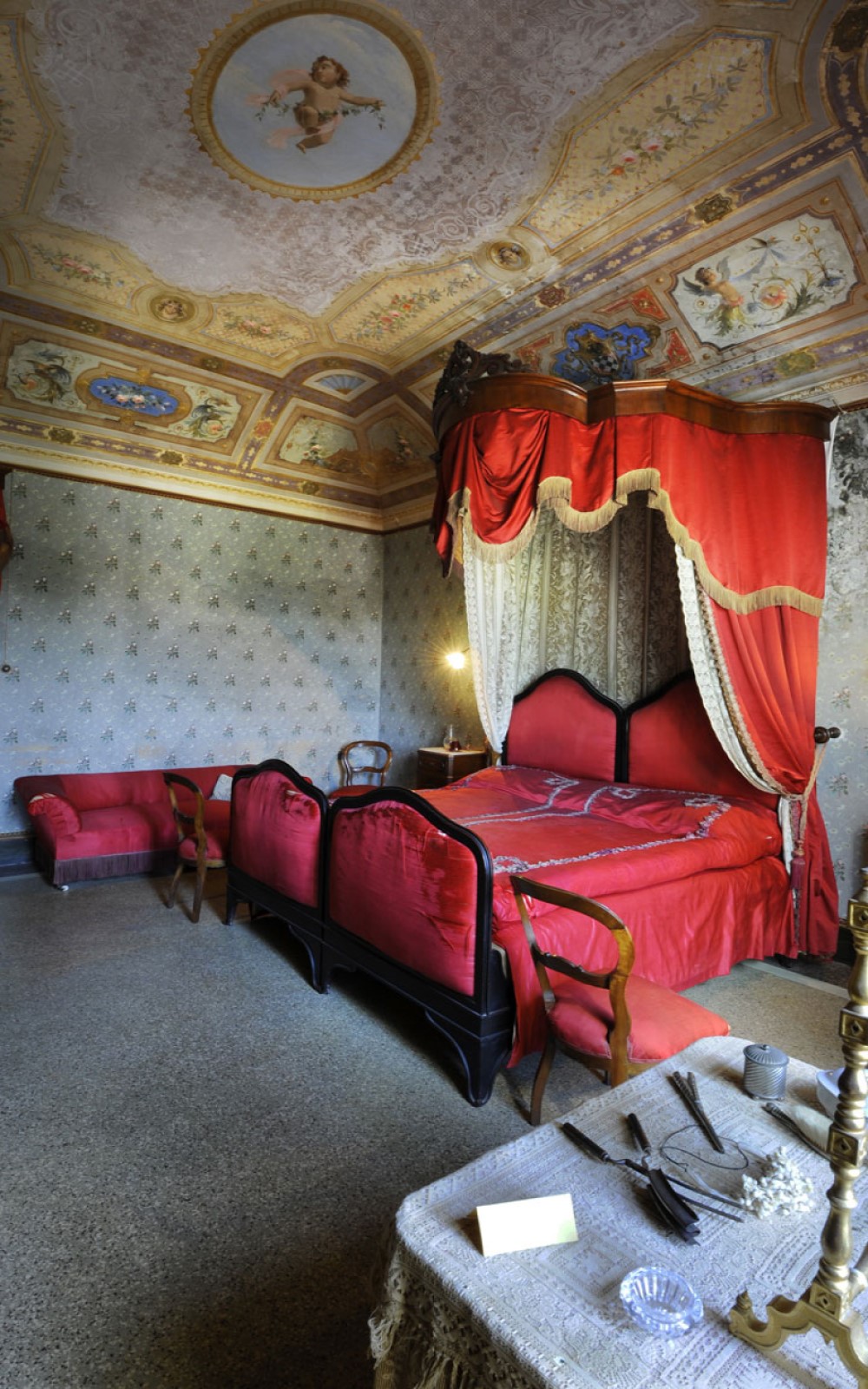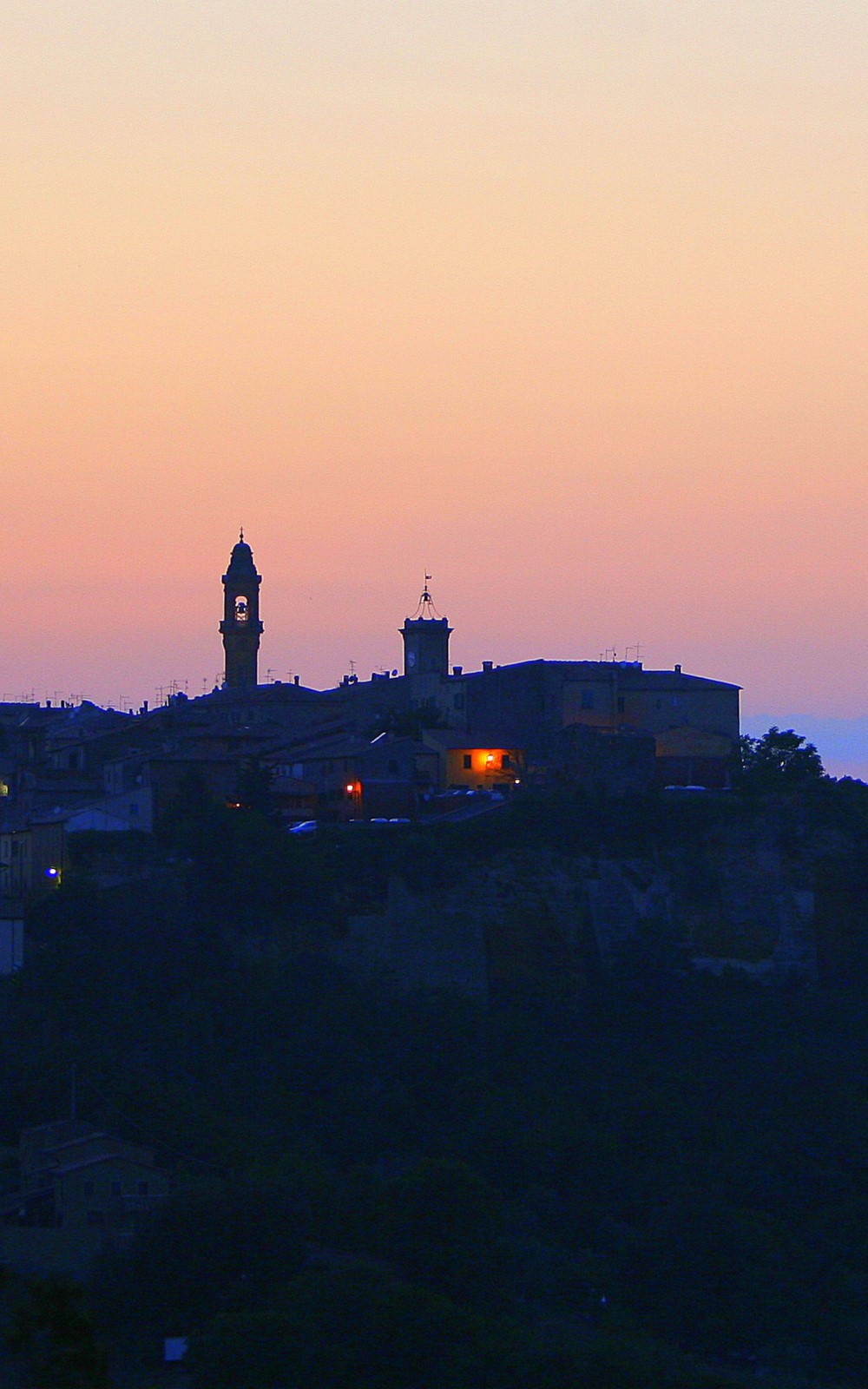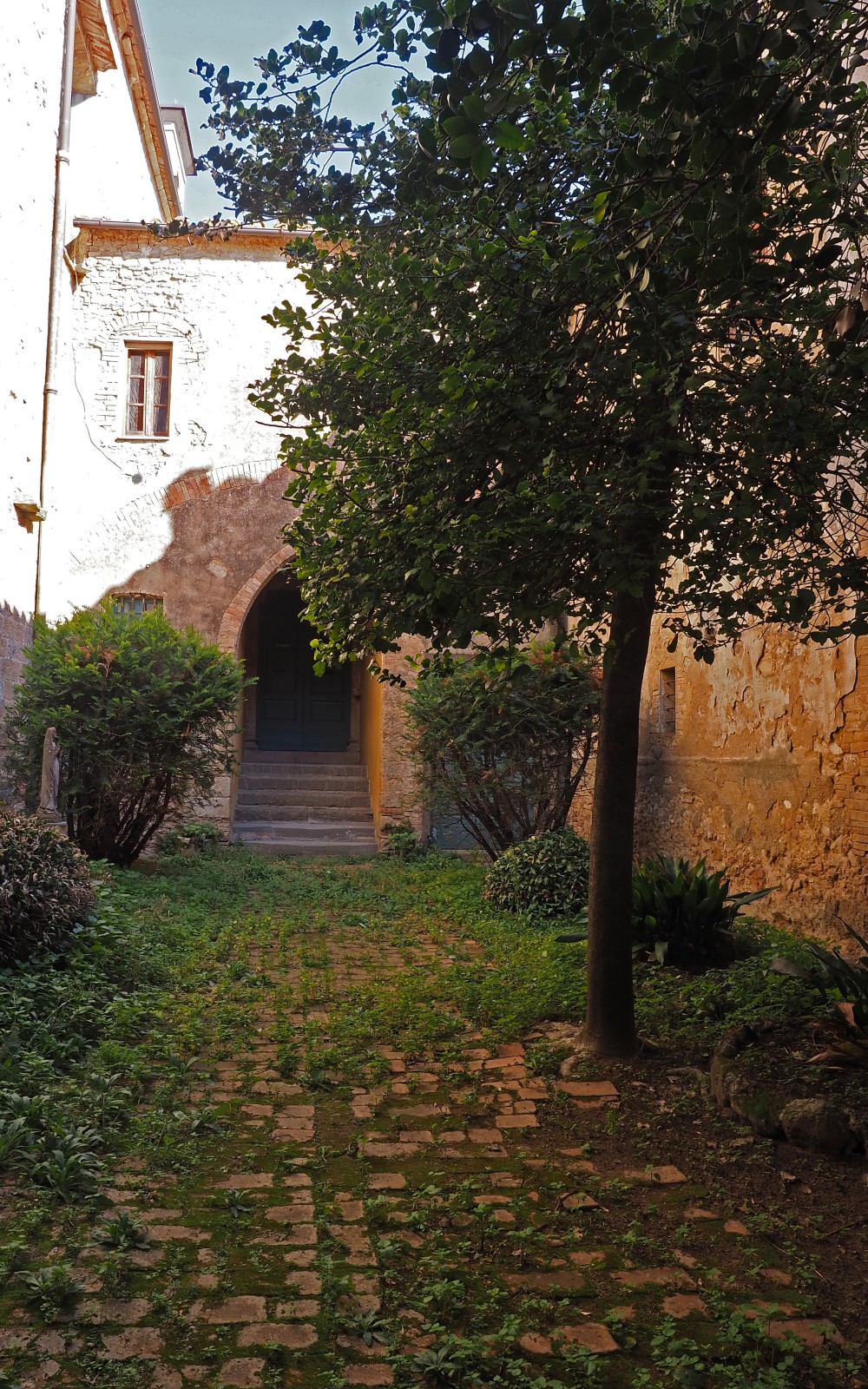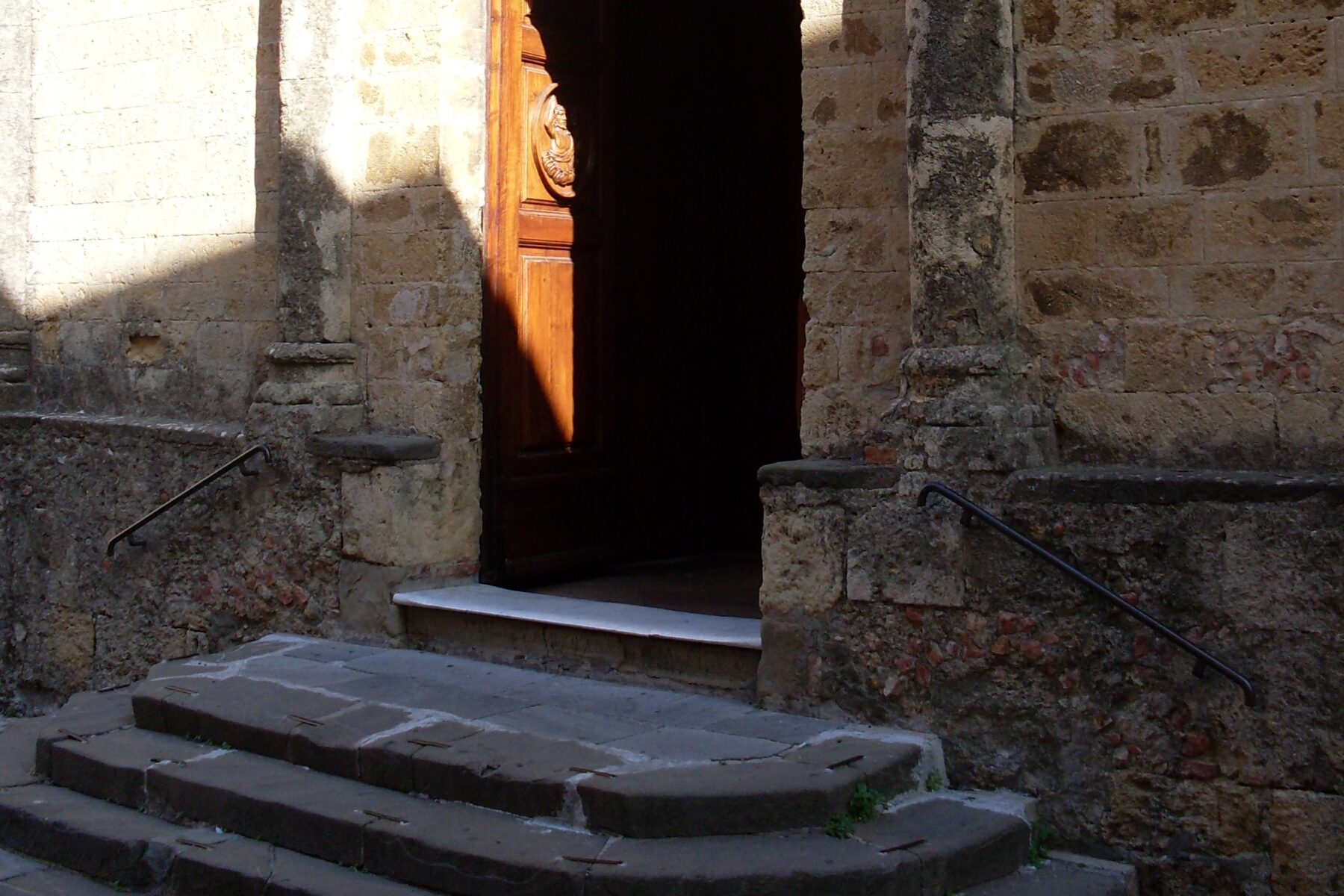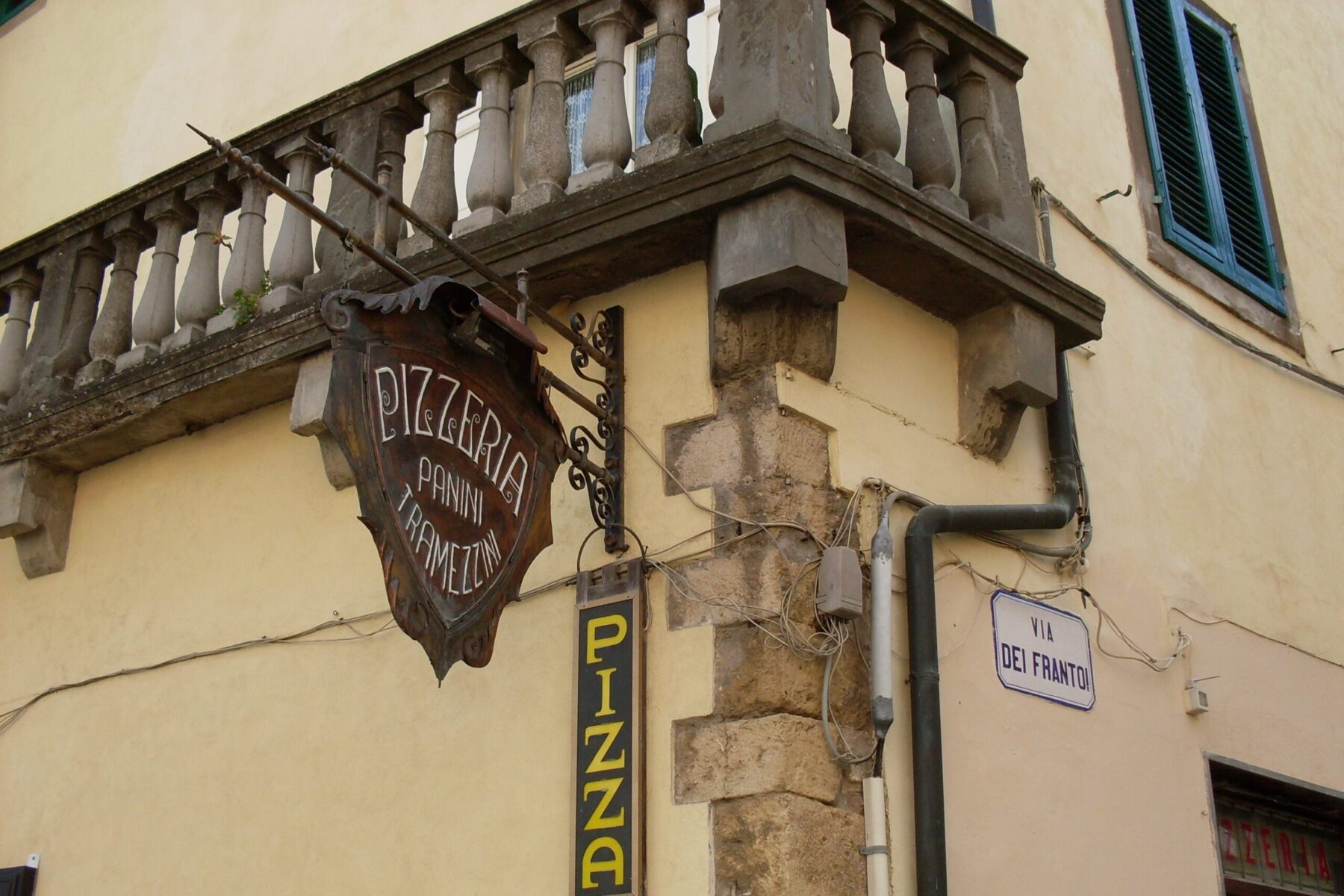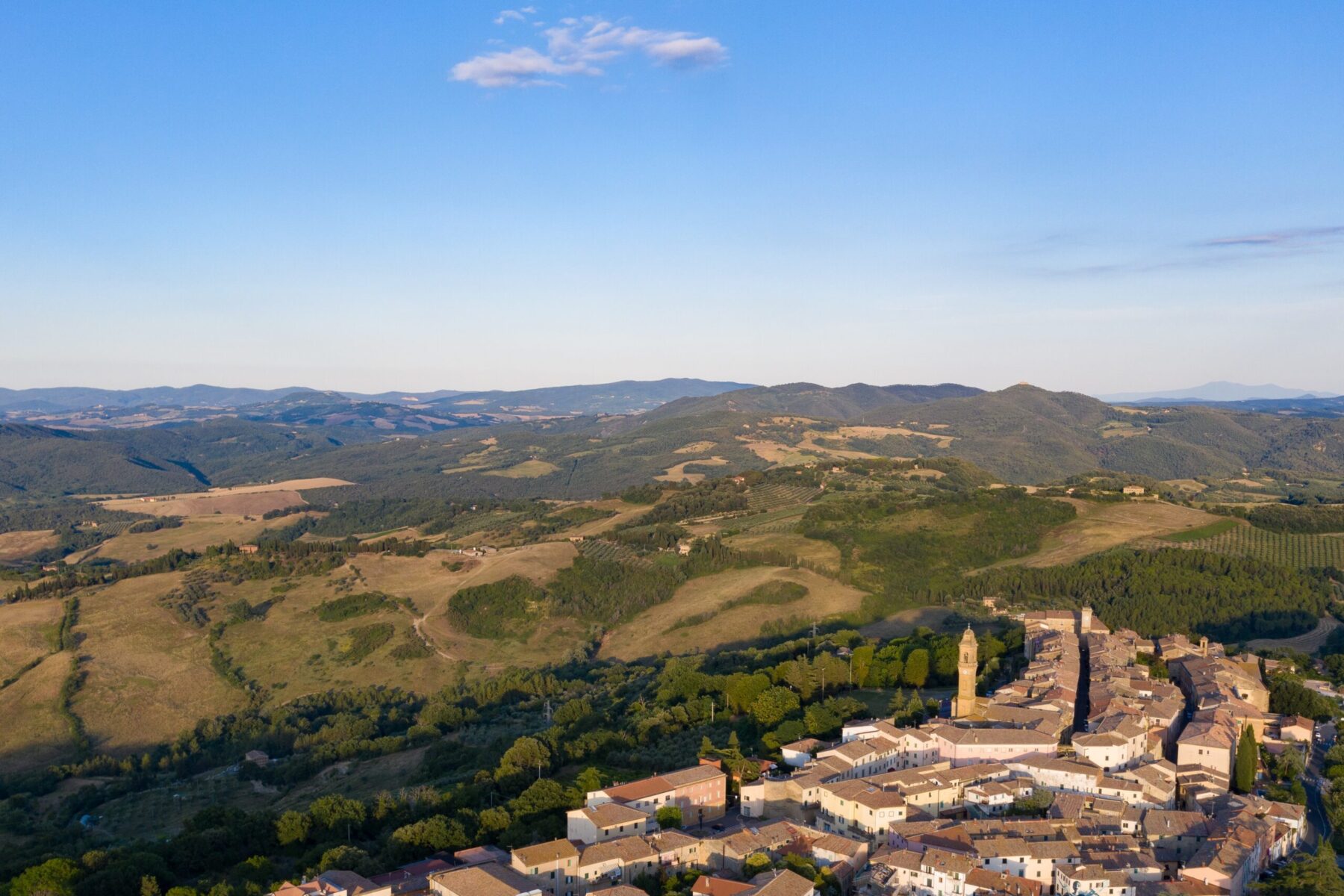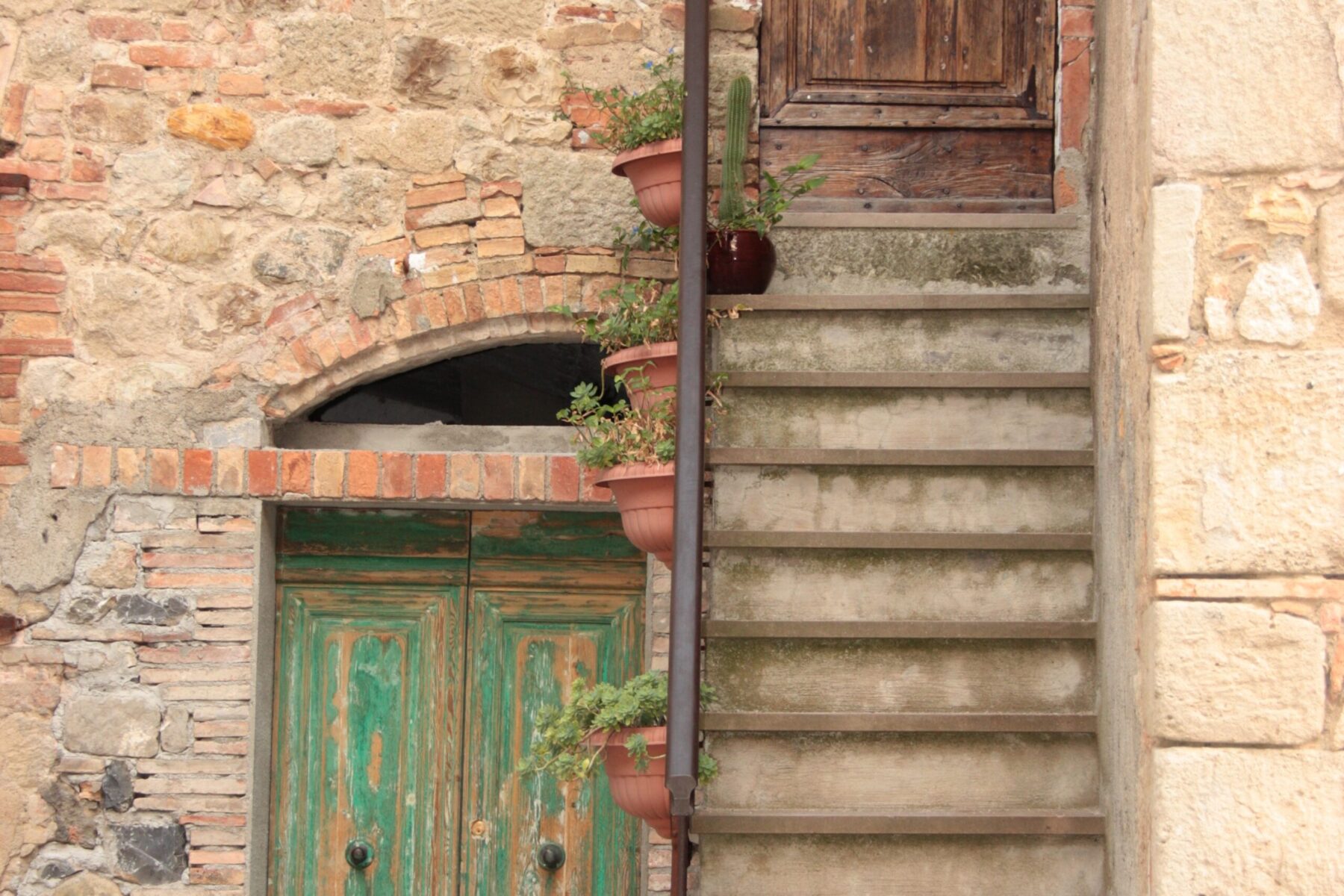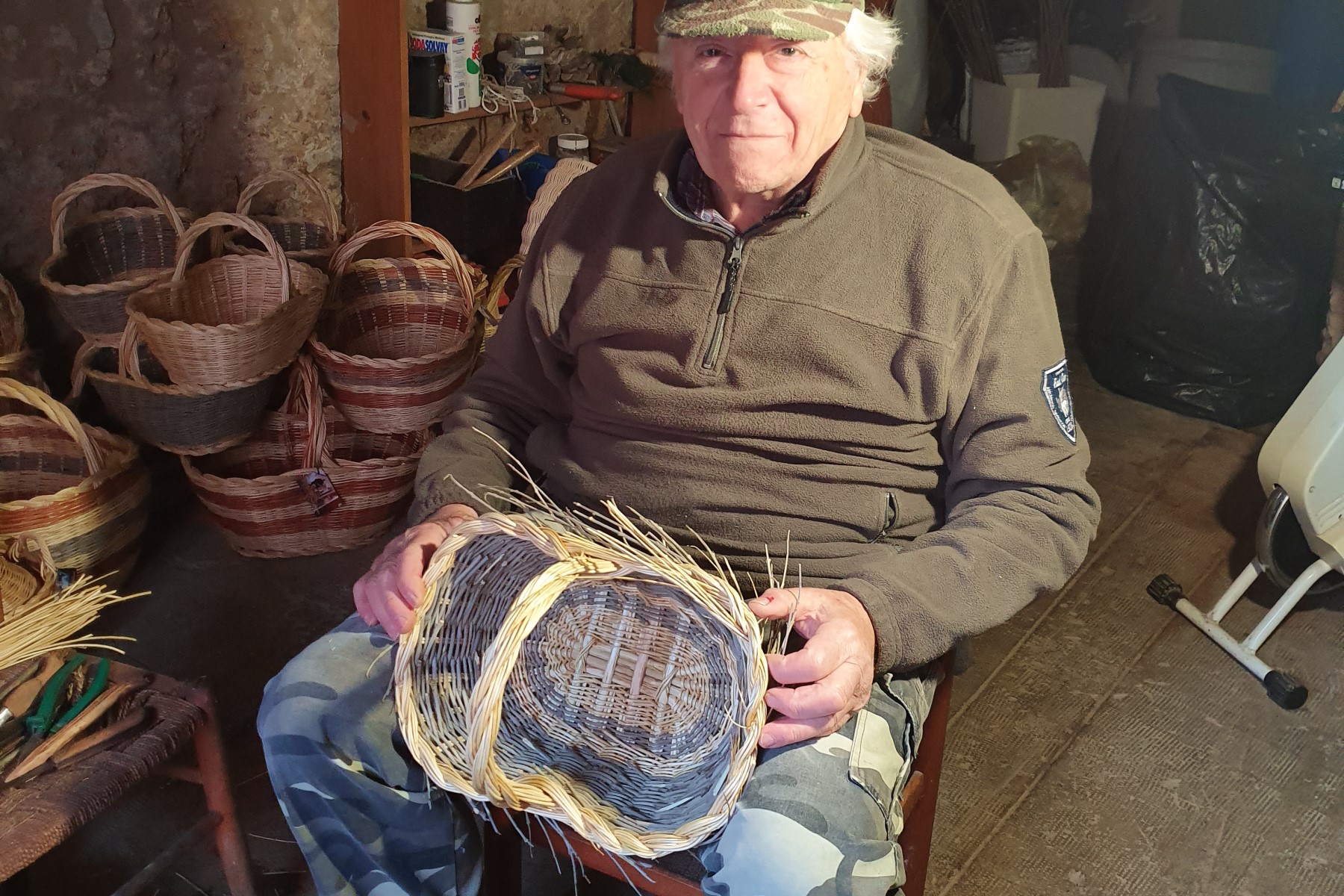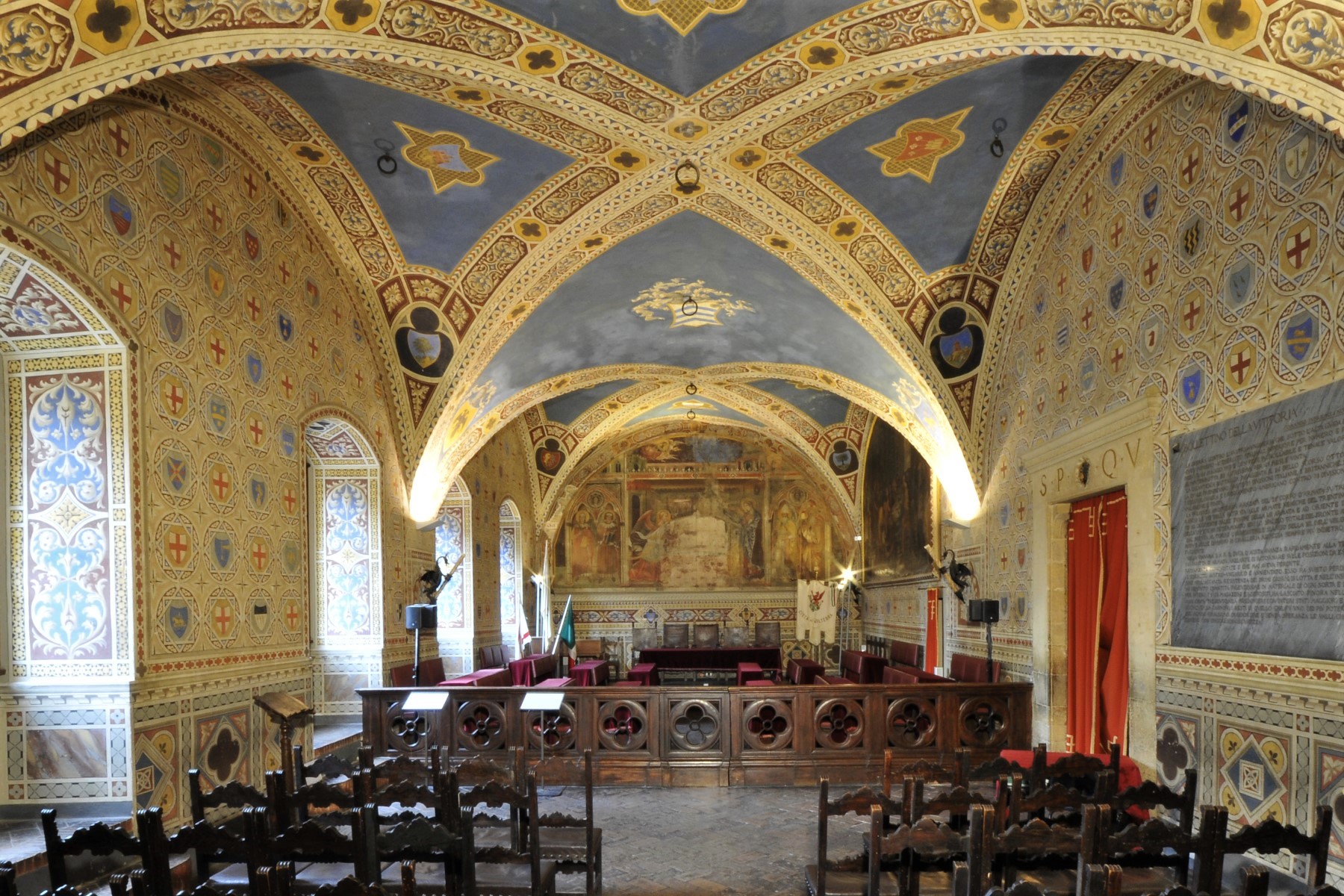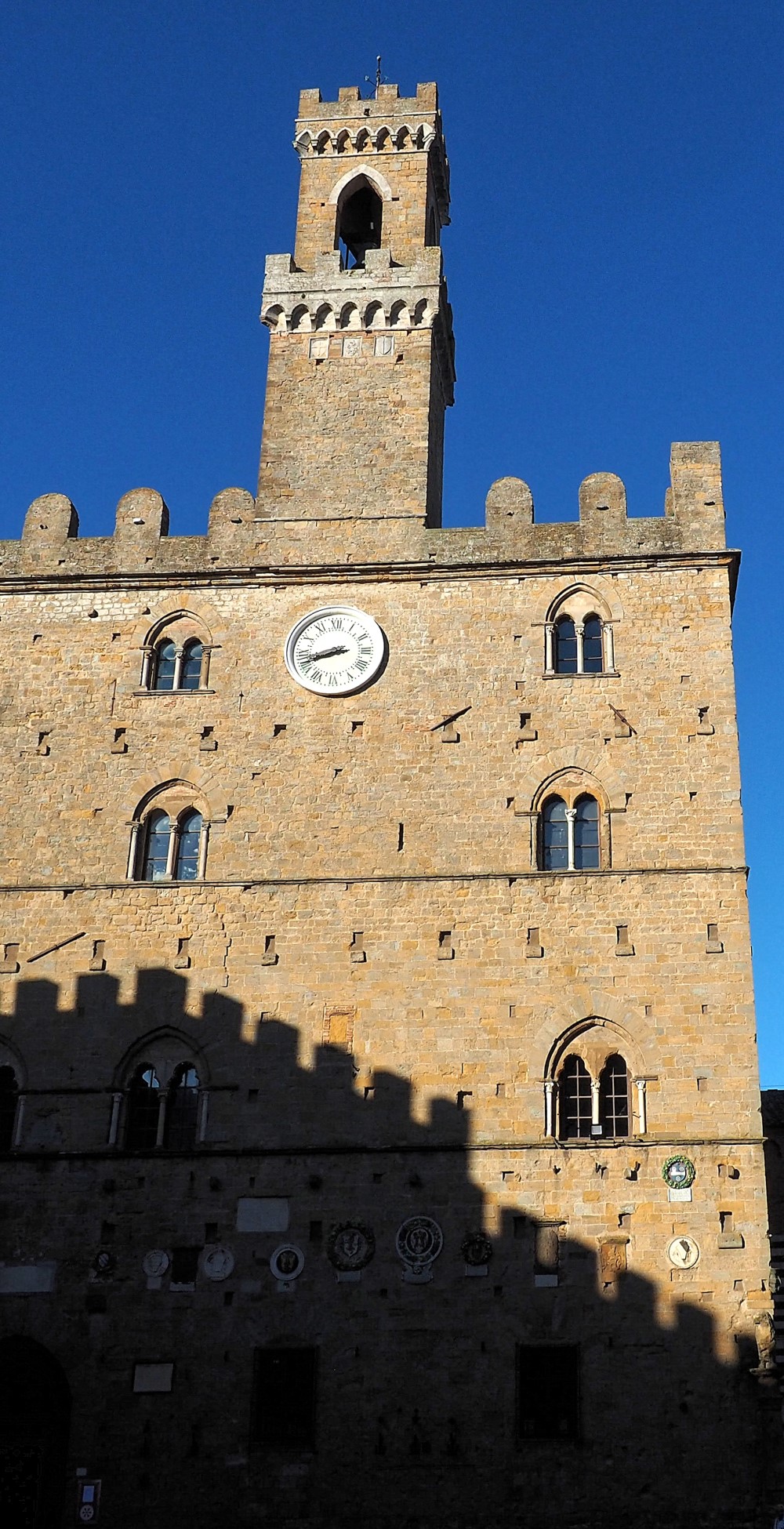
Pomarance: authentic Tuscany town
The hometown of the holiday home Podere Palazzone is Pomarance, a tranquil village in the heart of Tuscany, Italy. It is situated on a hill at an altitude of 370 meters and has about 5,000 inhabitants. Authentic, relaxed, rural, medieval scenery. This is perhaps the best way to describe Pomarance. The culture of life in Pomarance is based on every-day problems and the rhythm of Tuscany. Therein lies its appeal. Because here you look in vain for souvenir shops and tourist kitsch. Indeed, our guests are welcome in an authentic environment and invited to immerse themselves in the true culture of Tuscany.
Volterra: Tuscany
town with history
The fascination of living history — that’s what Volterra, our neighbouring town with about 10,000 inhabitants at an altitude of 530 meters, offers. Although we are not located in its municipal area, every Pomarancino, indeed perhaps every Tuscan, has taken Volterra to his or her heart. That’s why we, too, are allowed to feel a bit part of Volterra.
To experience history not only from books and museums, but to live in the midst of a historical ambiance — that is what makes Volterra so unique. Everything you know from history lessons is here, within a few meters, in its original state: Etruscan city walls and gates, Etruscan necropolises, Roman theatre, and thermal baths. Important sights are the medieval residential towers, the Medici fortress, the churches, and the Renaissance palazzi. World-famous and a military masterpiece of its time is the imposing Etruscan city gate Porta all’Arco. Churches are a dime a dozen here. It is worth visiting at least some of them. Perhaps not so much for single outstanding works of art, but rather for their charm and history. The colourful frescoes of the Capella della Croce di Giorno leave no one untouched. In general, Volterra is of great importance for the spread of Catholicism in Italy. Because the first Pope after St. Peter, St. Linus, came from Volterra.
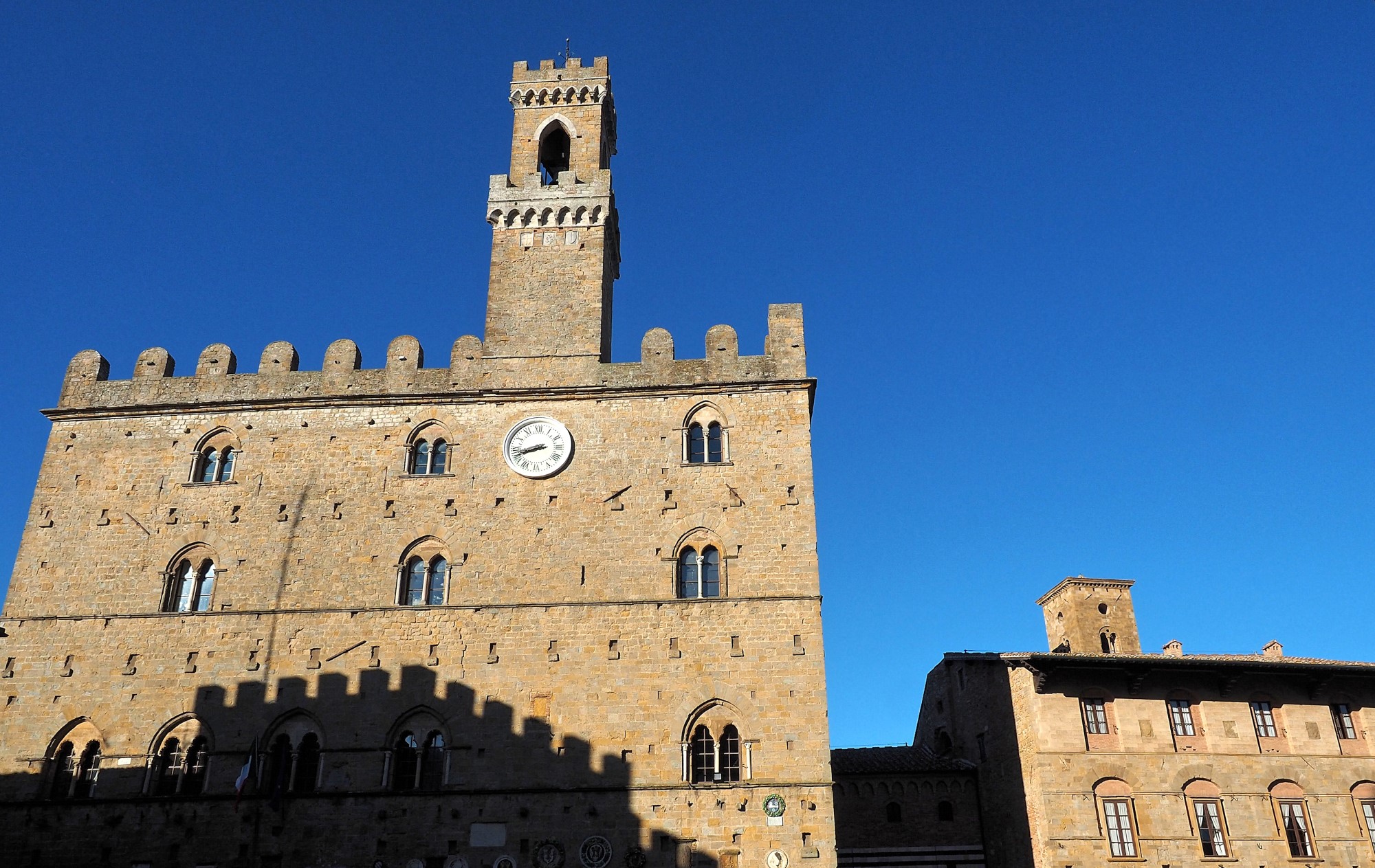
Pomarance: authentic Tuscany town
Typical Tuscany
The hometown of the holiday home Podere Palazzone is Pomarance, a tranquil village in the heart of Tuscany, Italy. It is situated on a hill at an altitude of 370 meters and has about 5,000 inhabitants. Authentic, relaxed, rural, medieval scenery. This is perhaps the best way to describe Pomarance. The culture of life in Pomarance is based on every-day problems and the rhythm of Tuscany. Therein lies its appeal. Because here you look in vain for souvenir shops and tourist kitsch. Indeed, our guests are welcome in an authentic environment and invited to immerse themselves in the true culture of Tuscany.
Medieval flair in the Centro Storico
In the town center there is the indispensable piazza where young and old meet. Here you can see the agricultural character of our village. The conversations are all about the rainfall for a good wine harvest or the expected oil content in the olives this season. People argue about the best way to cook tomato sauce and exchange stories about wild boar hunts and sighted wolf tracks. Of course, the day-to-day politics of Italy are also discussed, and the coaches of the big football clubs are given tips for their team line-up.
Pomarance’s Centro storico is very ice and has a homely atmosphere due to its narrow streets, arched passageways, and many flowerpots on steep stairs. Worth a visit are the Romanesque church Pieve di S. Giovanni from the 12th century, which rests on an Etruscan tomb, and above all the medieval houses. The ancient city wall and its gates are still clearly visible. Around them, in the 17th and 18th centuries, the noble families of Pomarance and the French Count de Larderel built impressive palazzi, now museums, where you can relive life from that era. Pomarance is traditionally divided into four rioni, which meet each September in the Palio Storico delle Contrade in historical costumes and colourful flag waving. We belong to the blue and yellow Rione Marzocco with its lion representing the former Florentine dominance over Pomarance.
Nature as far as the eye can see
Although Pomarance is small in terms of population, it is one of the largest municipalities in Italy in terms of area. Three large nature parks, numerous rivers, hills over 500 meters high and mountain villages with fewer than 20 inhabitants. As a result, large and small wildlife feel at home here, from wild boar to porcupine, bees and fireflies, or birds such as the short-toed eagles, barn owls or hoopoes. Even the wolf has settled here again in recent years.
Everything your heart desires
In Pomarance you can nearly buy everything. We still have the traditional vegetable shop, two bakeries with homemade crispy white bread and the best schiaccia in Tuscany. Tuscan salami is delicious. We recommend trying it at Fabiani’s. Some shepherds from the surrounding farms offer excellent Pecorino. On our neighbouring farm, essences and perfumed oils are obtained from organic herbs and fruits. Furthermore, the profession of basket weaver is still practiced. He primarily uses young olive branches. As in most villages of Italy, there is, of course, an ice cream parlour and a pizzeria (pizza also to take away), while in the surrounding area nice rural trattorias invite for dinner. Thursday is market day in Pomarance, while the everyday items are available at the coop supermarket.
Don’t hesitate asking us
If you are interested in the history of Pomarance, you will find extensive information with us. If you would like to know more about the role of Pomarance in the two-year siege of Volterra by the Roman General Silla, about the rule of the Medici over Pomarance or the influence of the industrial revolution on the local economy and society, we will be happy to provide more details.
Volterra: Tuscany town with history
Living history is no contradiction
The fascination of living history — that’s what Volterra, our neighbouring town with about 10,000 inhabitants at an altitude of 530 meters, offers. Although we are not located in its municipal area, every Pomarancino, indeed perhaps every Tuscan, has taken Volterra to his or her heart. That’s why we, too, are allowed to feel a bit part of Volterra.
To experience history not only from books and museums, but to live in the midst of a historical ambiance — that is what makes Volterra so unique. Everything you know from history lessons is here, within a few meters, in its original state: Etruscan city walls and gates, Etruscan necropolises, Roman theatre, and thermal baths. Important sights are the medieval residential towers, the Medici fortress, the churches, and the Renaissance palazzi. World-famous and a military masterpiece of its time is the imposing Etruscan city gate Porta all’Arco. Churches are a dime a dozen here. It is worth visiting at least some of them. Perhaps not so much for single outstanding works of art, but rather for their charm and history. The colourful frescoes of the Capella della Croce di Giorno leave no one untouched. In general, Volterra is of great importance for the spread of Catholicism in Italy. Because the first Pope after St. Peter, St. Linus, came from Volterra.
The charm of Tuscany
All this overwhelming history is embedded in a cosy, chilled-out atmosphere. Because the amount of visitors is kept within reasonable limits even in the high season. The entire centre of Volterra is a pedestrian zone. There are nice bars, where you can join locals to start the evening with an aperitif, perhaps with a spritz or a glass of prosecco. Traditional restaurants, good pizzerias and ice cream parlours invite you to linger. The perfect places to observe and comment undisturbed on the activities of the Volterrans. What’s more, small pubs and taverns serve wine and snacks in underground vaulted cellars. The culinary highlight of Volterra is the white truffle, to which a special sagra is dedicated in autumn.
On the promenade i Ponti, you can stroll in the evening with an endless view of the surrounding hills, all the way to Corsica. Here you can enjoy the most beautiful sunsets. Landslides and erosion have sculpted an alien-looking landscape. Just watch the impressive balze around the Badia Camaldolese.
Centre of culture and alabaster art
Volterra, nominated for the Italian Capital of Culture, has an extraordinarily vast cultural program. No wonder, because wherever you look, you see culture. This leads to a very nice music entertainment program (Volterra Jazz), theatre, gastronomy, and fine arts. In particular, the night-time events are very popular, with all the sights open until early in the morning.
Volterra is famous for its worldwide unique alabaster art. Once upon a time, this particularly white and shining gemstone, was the preferred material for Etruscan urns. Today it is used for fine sculptures, some of them very artistic. Quite some craftsmen are happy to open their doors to visitors. Opinions may differ as to the artistic value of the circular installations on the hills surrounding Volterra of contemporary Italian sculptor Staccioli. However, they are definitely eye-catchers. Because they do cast interesting shadows on our beautiful landscape and offer new perspectives of our hills.
Don’t hesitate asking us
However, the most amazing spots in Volterra are its somewhat more inconspicuous curiosities, which only reveal themselves to the attentive visitor. It is worth taking long exploration walks through the town. Discover the ancient house entrances, the windows, the terraces, the streetlamps, the archways, and the doorknobs. And above all the people who animate Volterra’s alleys with the typical Mediterranean mix of bustling activity and relaxed dolce vita.
At Podere Palazzone we are members of the Archaeological Association of Volterra. Therefore, if you’d like some pointers on some of Volterra’s most interesting spots that aren’t listed in every travel guide, we’re at your service.




















